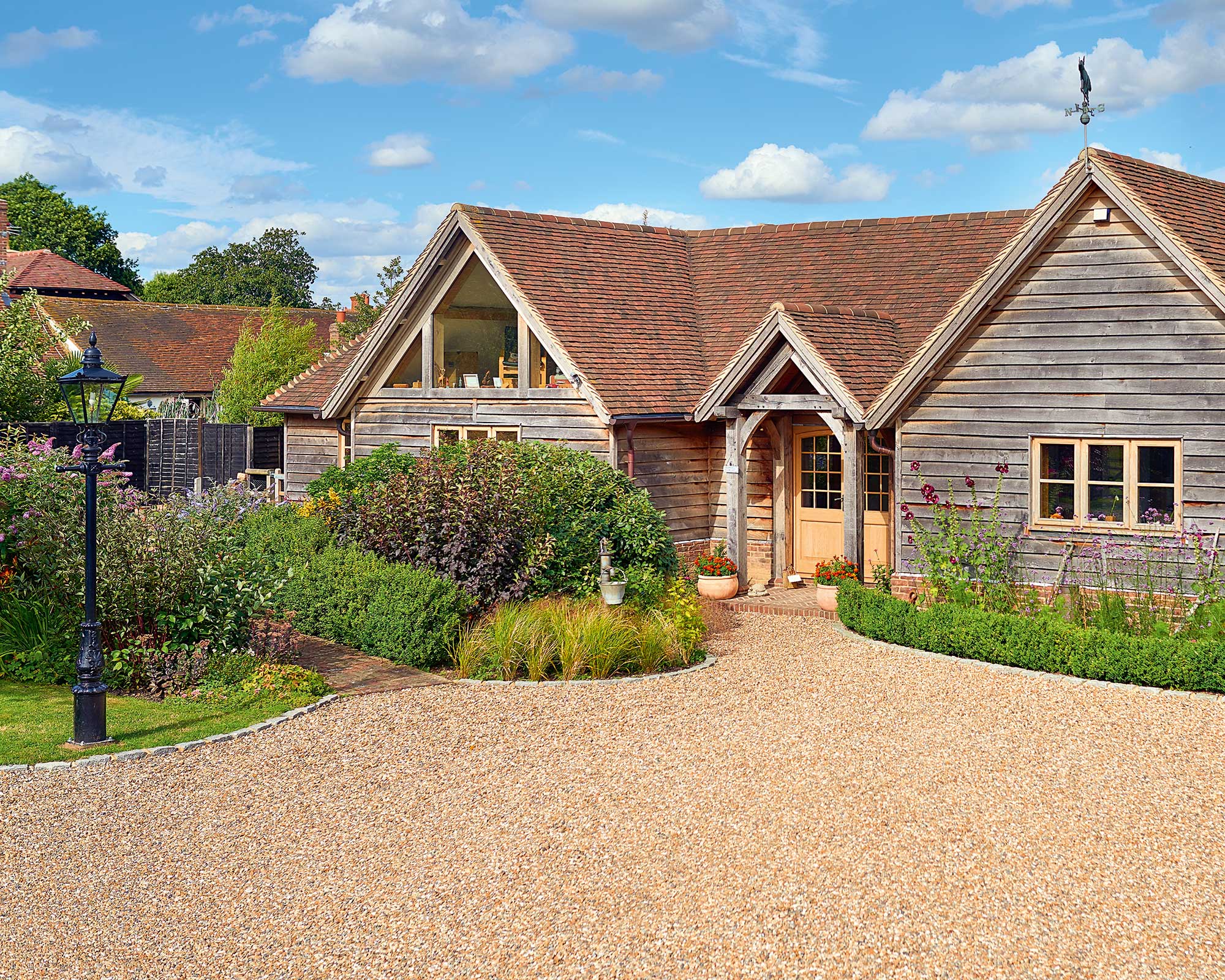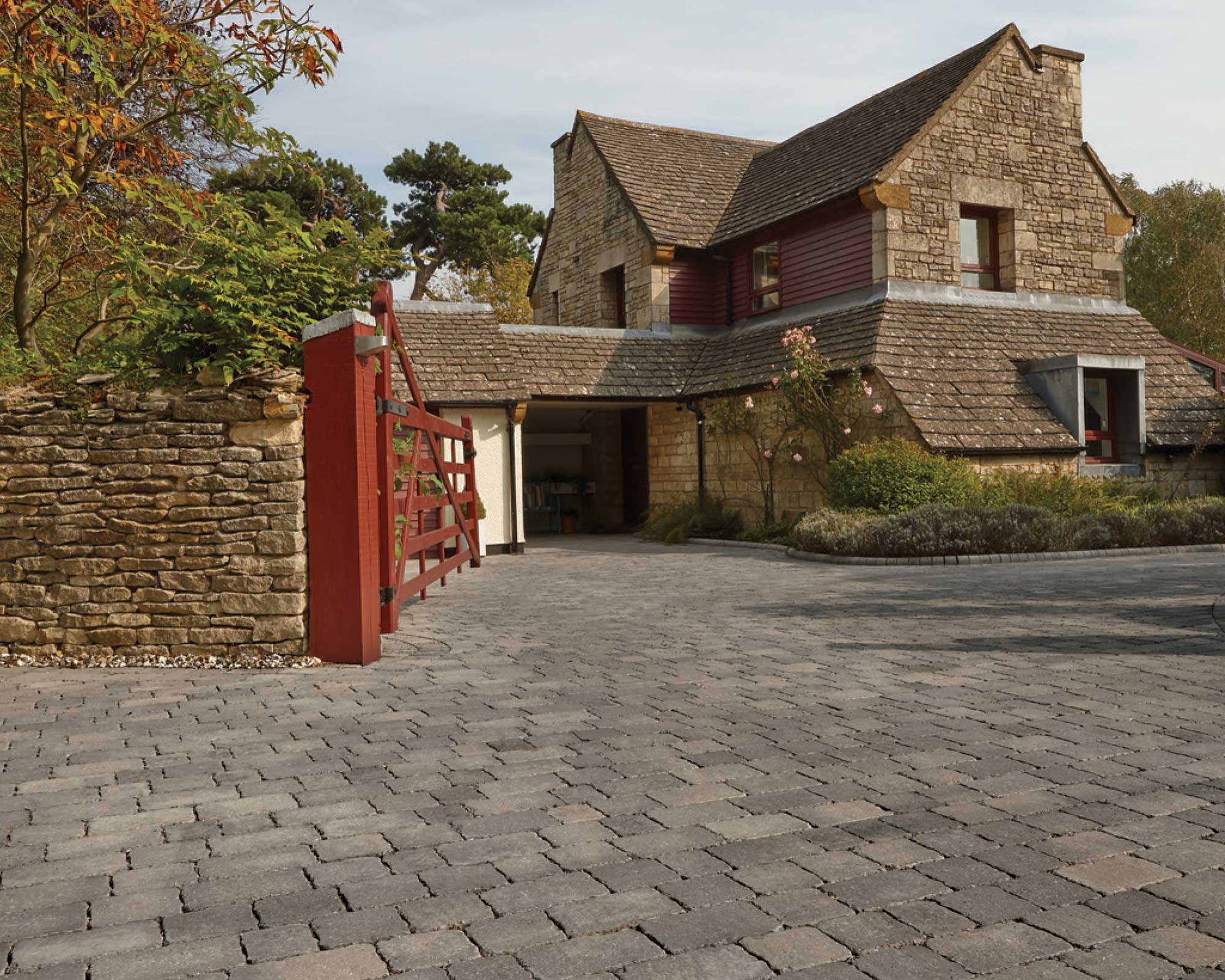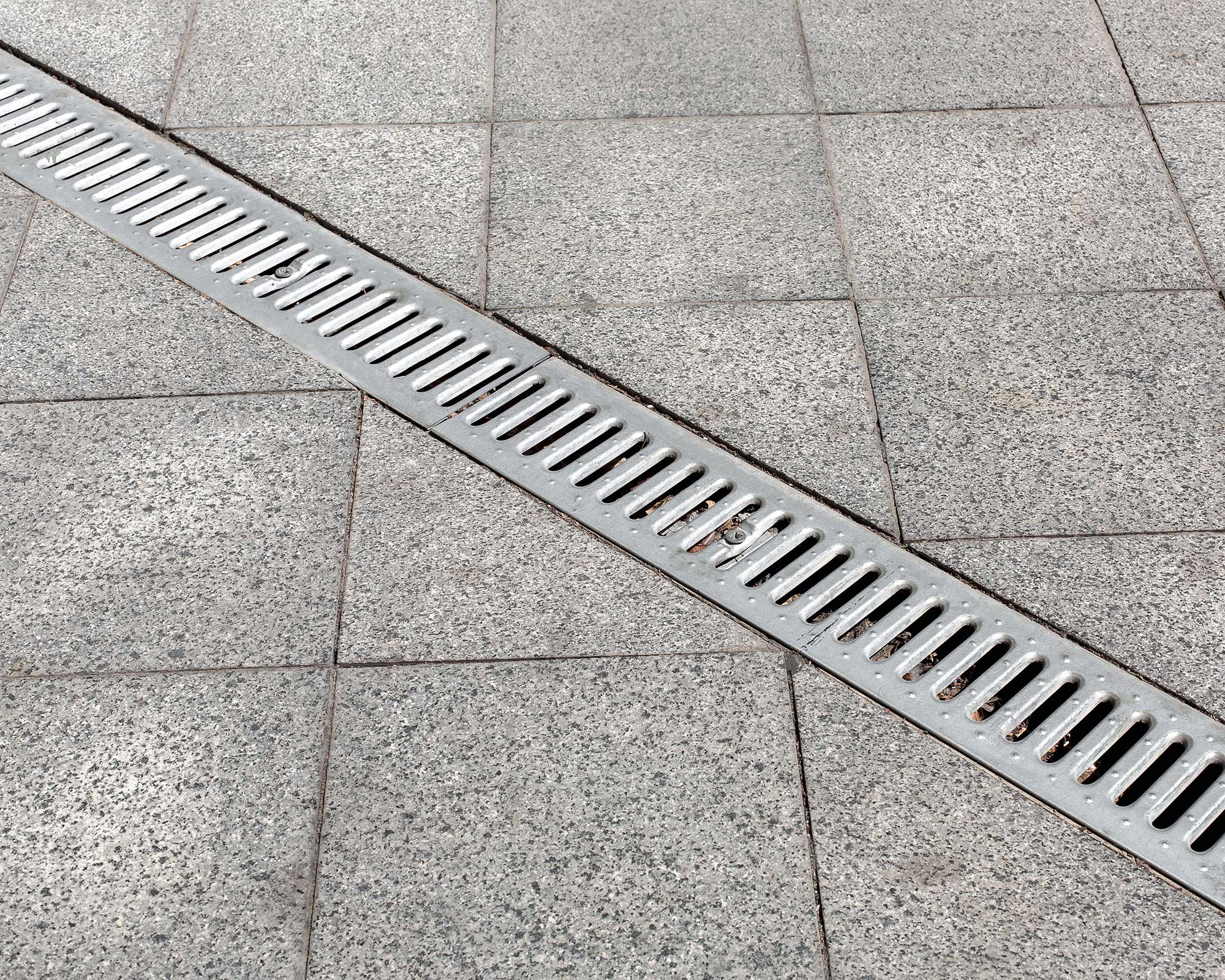Driveway drainage solutions that prevent flooding: 5 methods to help protect your plot
These driveway drainage solutions will reduce the risk of standing water and help your plot's entrance look smarter for longer


Driveway drainage solutions are essential for any front yard. Otherwise, rainwater will have nowhere to go, resulting in pools of standing water and increased flooding risks. Not only does this look unsightly, but it can also cause damage to your property. And it's inconvenient from another practical standpoint, too: no one wants to get out of their vehicle to immediately step into a puddle.
What's more, in many areas, driveway drainage is essential for meeting building legislations. So, when considering new driveway ideas, it goes without saying that you'll need to factor some in. Luckily, there are a good few approaches that can solve the issue – and some will up your plot's sustainability levels, too.
5 driveway drainage solutions for your front yard
We've rounded up the top driveway drainage solutions for you to recreate in your landscaping scheme.
1. Add a gradient
If you're going for traditional concrete or another hard surface for your driveway, it will need to be built on a slight gradient. This will allow rainwater to drain away rather than build up.
However, in the UK at least, if you simply install a hard-surface driveway (of five square meters or more) with a slope for run-off, you'll still need to acquire planning permission. This is because you also have to carefully consider where the rainwater is being channeled. In many instances, it will need to run into a purpose-built permeable area on your own property, rather than being directed to street drains where it can cause flooding or pollute nearby water sources.
For instance, you can build the slope so that the rainwater runs down into a lawn or border to disperse naturally. For areas with heavier rainfall, a soakaway may be more suitable, which we discuss below.
Remember, it's always a good idea to check your local planning office for more guidance before you build your driveway. The Planning Portal has all the info you need if you live in the UK.

Sloping a driveway will help channel rainwater run-off
2. Go for gravel
Instead of using traditional materials, you could opt for a permeable surface. One of the best (and most budget-friendly) options for this is by building a gravel driveway.
'Gravel is the easiest and most cost-effective solution to allow rainwater to soak away naturally,' says Thomas Goodman, a construction expert at MyJobQuote.co.uk. 'Plus, it's decorative and simple to install.'
It's also good from a security perspective, as the crunch underfoot will alert you to any approaching visitors. 'However, it's not the best surface for wheelchair users or families with pushchairs,' he adds.
For ease of maintenance, you can buy grids made of concrete or durable plastic (look for recycled designs) that will keep the gravel in place. Alternatively, you can fill such grids with hardy grass, which Thomas says 'can be attractive and drains well.'

Gravel is an affordable material that will soak up rainwater
3. Install porous paving
As a spokesperson for GardenBuildingsDirect.co.uk says, 'The most effective way of making your driveway flood-proof is by ensuring that the material used is porous, making it easy for surface water to drain away.' And besides gravel (or reinforced grass), there are other permeable options to choose from.
Thomas Goodman of MyJobQuote.co.uk says, 'Permeable block paving and resin bound driveways are great options that can be used with a base or soakaway. They’re low maintenance and there's a choice of styles available.'
One example is the Infilta block paving from Bradstone. Lee Dunderdale, Product Manager at the paving, walling, and edging company, explains how it perfectly combines stylish design with ultimate practicality. 'When it is incorporated within a permeable sub-base, it provides a surface that filters surface water away through the gaps between the blocks, preventing it from collecting on the driveway and keeping up that all-important curb appeal,' he explains.
This approach tends to be more expensive, but if you're a fan of stylish paving ideas, the investment will be well worth it. Plus, when it comes to learning how to clean a driveway, these are one of the easiest types to get looking their best again.

This driveway is paved with Woburn Rumbled Infilta from Bradstone
4. Build a swale
'Creating a swale is a great budget-friendly solution that can help to prevent flooding,' says GardenBuildingsDirect.co.uk.
'Although many people tend to use swales in their garden, they can actually work really well on a driveway too. Swales are like a broad yet shallow ditch that is often covered with plants, flowers, and ornaments. They are a great way of making drainage less of an eyesore and can often be more cost-effective, too.
'They're best placed where the water seems to gather the most,' they continue. To create one, simply dig out a channel in the driveway and edge it with the same material used for the surroundings.
Then, 'fill the basin with soil or gravel and decorate to fit in with the surrounding colors and style. Swales may not suit every type of driveway but they can help fix water logging problems at a fraction of the price as well as create an interesting design feature.' Our rain garden ideas guide is full of further inspiration for this sort of installation.
A soakaway is a similar feature, except they tend to be deeper and are often built with special soakaway crates to help collect up high volumes of rainwater. 'Find a knowledgeable landscaper or builder to install it, so it works properly,' advises Thomas Goodman. 'And, it's worth working out what type of soil you have as soakaways don't always work well in clay areas.'

The 'Rain Chain' garden by Wendy Allen is full of plant-filled features to prevent flooding
5. Try a trench drain
A final option for driveway drainage is building a trench – or channel – drain. As Checkatrade explains, 'these linear drains help move water through an underground drainage system. By collecting run-off and dispersing it over a large area, it acts as a gutter for your ground.'
ACO Water Management's Oliver Collins says, 'Drainage channels must discharge rainfall to somewhere appropriate, and not just allow it to pool wherever it naturally flows. This may sound obvious, but it is a frequent design flaw that I’ve encountered on driveways.' Ensure it directs to a soakaway or other permeable area, or, if your region allows it, the sewerage system of your property.
'Driveways are subject to a range of different stresses, so getting the right load class of drainage channel is a top priority,' says Oliver. 'It isn't always enough to tailor drainage channels to the weight of your own vehicle, as it is likely that heavier vehicles, such as home delivery vans, will come into contact with the channel – especially if it is adjacent to the road or footpath.
'B 125 drainage channels are recommended as a minimum, offering the appropriate load-bearing capabilities for the types of stresses a typical driveway is likely to experience,' he says.

A trench drain will capture rainwater and channel it away underground
What is a sustainable driveway drainage solution?
If you're interested in sustainable gardening, the good news is you don't have to let all that rainwater go to waste.
As Lee Dunderdale of Bradstone says, you can collect and reuse the water, which not only will reduce the risk of flooding but will also save money on metered water supplies.
'This technique known as rainwater harvesting provides non-drinkable water for garden irrigation, car washing, and toilet flushing,' he says. 'A rainwater harvesting system uses hard and soft surfaces to collect rainwater from your driveway – and your roof or patio, too – filters out leaves and debris, then stores it in a holding tank beneath the drive or patio.
'Water can then be drawn off via a pump as needed,' Lee says.

The garden was always a big part of Holly's life growing up, as was the surrounding New Forest where she lived. Her appreciation for the great outdoors has only grown since then. She's been an allotment keeper, a professional gardener, and a botanical illustrator – plants are her passion.
